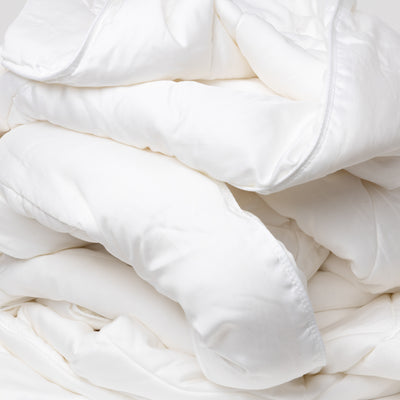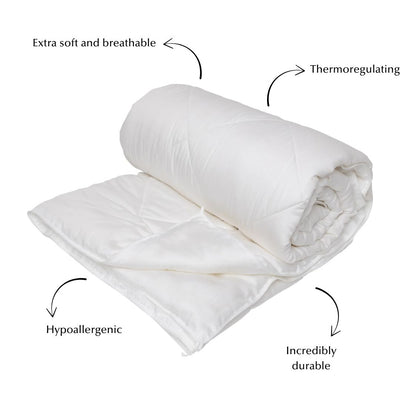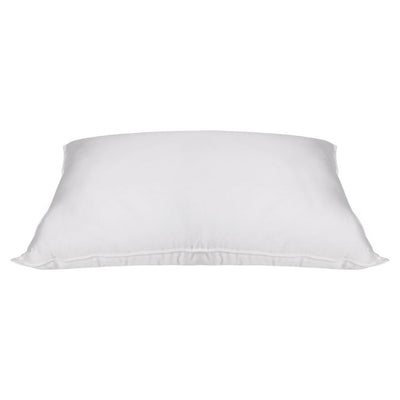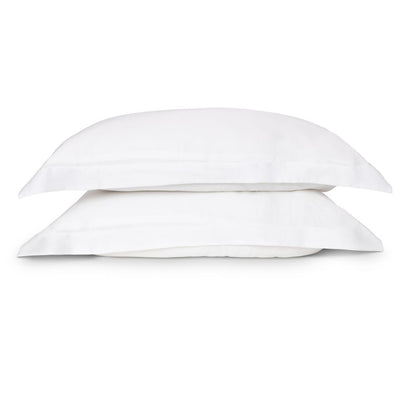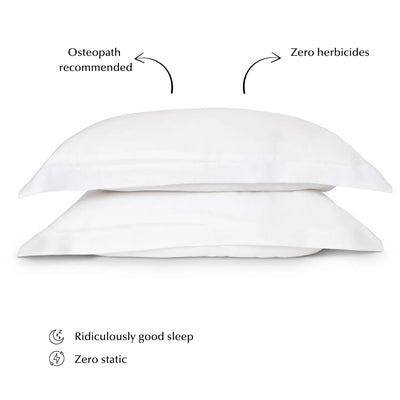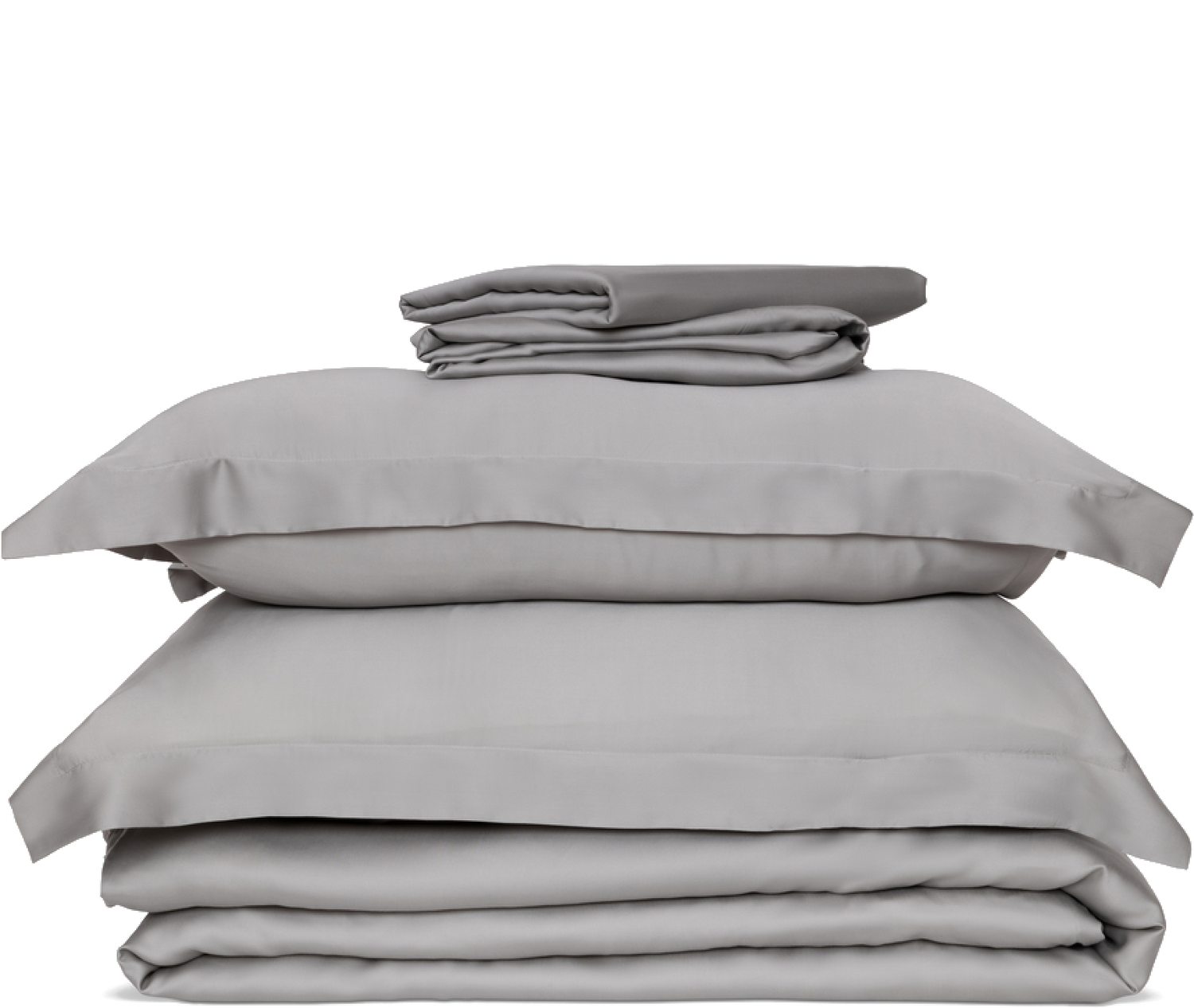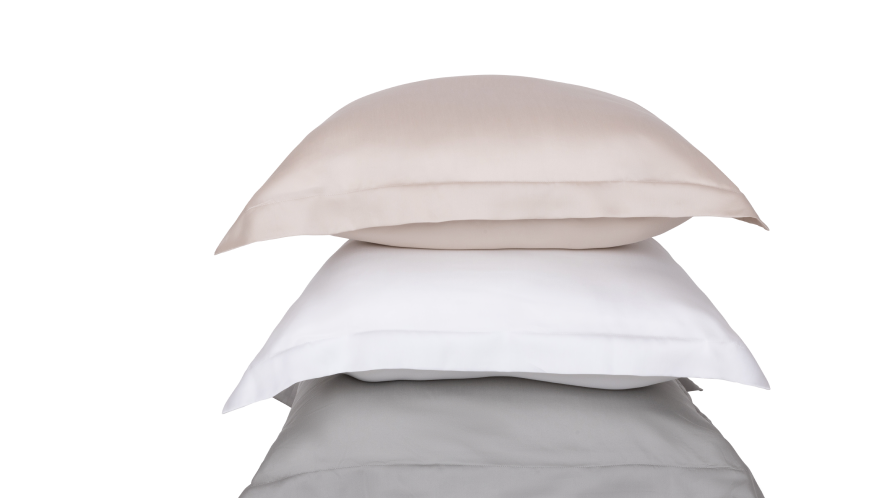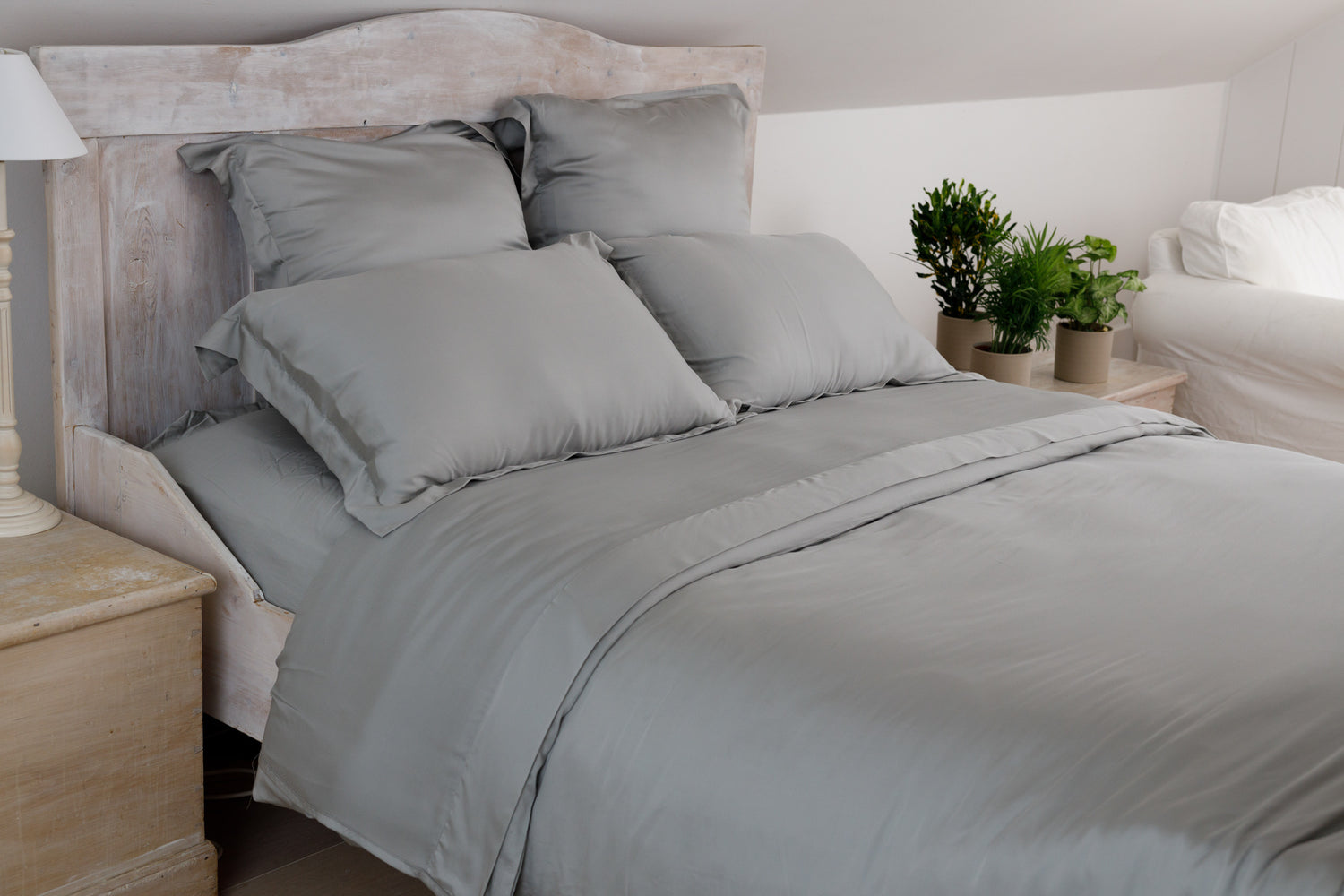Keeping your home cool when the weather starts to pick up is essential to a comfortable summer. After all, many of us will have experienced the uncomfortable humidity of a clammy heatwave and vowed to become more prepared for the next. But what are some of the most eco-friendly ways you can keep your home cool?
We decided to explore the green alternatives to air conditioning, to provide you with a list of tried-and-tested techniques sure to keep your home from overheating this summer. So, without further ado, read on to find out how to cool down your home.
What is the environmental and health impact of air conditioning?
It’s practical and convenient, but what is the real environmental impact of installing air conditioning in your home? Before buying an AC unit, consider the following drawbacks:
- Air conditioning units can contain harmful refrigerants that pump toxic gases into the atmosphere. The most common example is chlorofluorocarbon, which is most often found in older machines.
- Air conditioning can become a health hazard if you don’t regularly check and maintain your unit. For instance, dirty filters can harbour various pollutants which can trigger allergies and respiratory issues.
- Air conditioning consumes a lot of energy, which can quickly have an impact on the cost of your energy bills. This is especially important to consider as the cost of living continues to rise.
Simple ways to keep your home cool
With air conditioning clearly not the most eco-friendly way of cooling down your home, it can be useful to know a few other tried-and-tested techniques. To give you a helping hand, we’ve listed 19 top tips sure to keep you comfortable as the temperature begins to rise.
1. Unplug electronic devices and chargers when not in use
Whenever your electronic devices, appliances, and chargers are plugged in and switched on, they’re generating heat that’s slowly permeating through your home. It might not be much, but it can make the difference.
A straightforward way to start cooling down your bedroom and beyond is to make doubly sure each socket is switched off when not in use. To be safe, it can be useful to get into the habit of actually unplugging your devices entirely when not in use.
2. Buy a power strip to turn off your electronics simultaneously
As we’ve highlighted, a quick and simple way to keep your house cooler in the summer is to ensure all your accessories and appliances are switched off throughout the day (and night) when not in use. This is made easier with the introduction of a power strip or plug bank, which can be used to turn everything off at once.
3. Cooling a room naturally with plants
An excellent natural remedy to an overheating home is the introduction of plants and greenery. Whether you choose potted flowers or opt for a living wall, not only do they look great and add an organic dynamic to your space, but they also consume a lot of the hot air that you’re trying to combat – as well as blocking excess sunlight coming in through windows if kept on the sill. This, in turn, helps to cool down the room in which they’re kept, making plant life a great addition to the bedroom.
4. Use a house fan for nightly cooling
A house fan is a common cooling system that helps to ventilate your home, and can perhaps be considered as a type of eco-friendly air conditioner.
One of the most popular ways to keep your house cool, a house fan circulates cold air from outside throughout your space and releases the warmer air out through your attic. Using your fan at night ensures your home pulls in colder air than if you were to turn your fan on during a hot summer’s day. Notably, as well as keeping your home cool, a house fan can also improve air quality.
5. Install ceiling fans
While they may not necessarily replace warm air with a cooler breeze, rather just circulating the existing air throughout your home, a ceiling fan can be an effective addition in conjunction with some of our other methods. If you’ve successfully managed to cool down your property, a fan will do a great job at ensuring the cold air spreads.
6. Open windows at night
As a straightforward alternative to using a house fan, you can instead simply open a window or two if the outside air is more manageable than that inside your home. This replaces the hot and stuffy atmosphere with more comfortable air, resulting in a much cooler room.
7. Avoid running high-powered appliances until the evening
Running heavy-duty appliances like your washing machine, tumble dryer, or dishwasher can produce a lot of heat, which will permeate your home. In the summer months, this can quickly exacerbate the already-uncomfortable warmth. However, of course, you can’t simply stop using them for months at a time.
Instead, consider keeping them switched off during the day and waiting until the evening to use them. This will allow you to let the ambient night-time heat escape through an open window, to be replaced with the cooler outside air.
8. Close windows during the day
Just as you should open your windows at night, it can be helpful to keep them closed during the day. This ensures your home isn’t gripped by the uncomfortably clammy outside heat that typically defines the British summer. If the temperature is less humid, though, you can safely open your windows to let in a little midday breeze.
9. Tint your windows or install mini-blinds
A relatively straightforward way of keeping your home cooler in the summer is to tint your windows or apply reflective film. Not only will this eco-friendly method block out the glare of the sun – and the heat that comes with it – but you’ll also enjoy a little extra privacy too. Alternatively, for a quick fix in the warmer weather, consider simply installing mini blinds instead.
10. Install blackout curtains
As an alternative to practical mini blinds, consider an effective set of blackout curtains to completely block out unwanted and warm sunlight. You don’t necessarily need to hang them throughout your home; just by the windows that receive the most heat during the day. These will typically be your south-facing windows.
11. Plant vines on the south side of your house
It might sound like a peculiar hack, but installing vines across the south-facing side of your home can help to keep the heat out. The south side of your home sees the most sunlight, so setting up trellises here can be effective for when the temperature starts to rise. This is because the vines and ivy are excellent at providing shade for your home – and you’ll also enjoy an attractive and organic splash of colour at the same time.
12. Plant your garden strategically
As well as introducing wall-crawling vines and ivy to keep your home cooler, consider planting trees around the perimeter of your home. This will help to shade your garden and the side of your house. However, while an effective technique, just bear in mind that this will combat heat year-round, meaning any shady trees on the south side of your house may also mean sacrificing passive heat during the winter.
13. Use renewable energy to cool your home
If you’re planning on cooling a room using electric appliances, try to opt for those powered by renewable sources of energy. If you don’t already have solar panels, consider other eco solutions, such as a freestanding or wall-installed wind turbines.
14. Fight humidity and purify the air with a diffuser
A useful piece of kit to have when the temperature starts to rise is a handy aromatherapy diffuser. One of the simplest ways to cool down a room, the diffuser disperses your chosen essential oils and fills your space with a refreshing fragrance, which will be all too welcome in the hot weather. We’d suggest filling your diffuser with cold water, with a touch of peppermint oil.
15. Dress correctly for the weather
This is less a tip for keeping your house cool, and more a method of keeping cooler at home in general. It might sound obvious, but when the temperature starts to rise, make sure you have a wardrobe that allows you to dress appropriately. For instance, light and breathable fabrics will allow you to withstand the rising heat during the humid and often-uncomfortable summer months.
16. Use peppermint or eucalyptus oil
Again, this is another technique that’s perhaps more about keeping yourself cool than your home. However, it can be incredibly effective. Mixing a little peppermint or eucalyptus oil with water in a spray bottle and spritzing your skin throughout the day will help to keep you feeling comfortable and refreshed, even in extremely hot temperatures. Another excellent tip if you’re caught in an unexpected heat wave is to run cold water over your wrists throughout the day.
17. Insulate your attic
Because heat famously rises, your attic can get exceptionally hot – especially during the summer. If you’ve ever popped up to quickly grab something, you’ll know exactly what we’re talking about. However, effectively insulating your attic will at least ensure no further heat creeps in. And as a bonus, it’ll also do a great job at keeping out the cold in winter, which will help to keep those energy bills down.
18. Paint your roof
This is among the most permanent tips on our list if you’re wondering how to cool a house down, but you might be interested to know that using light colours to paint your roof can help to keep your home from overheating. Brighter shades will deflect the sunlight, which prevents your home from absorbing as much warmth.
19. Use Tencel bedding
The type of bedding you choose will inevitably have a huge impact on your quality of sleep, including how warm you feel at night. Choosing naturally temperature-regulating bed sheets, pillowcases, and duvet covers, such as those made from Tencel, will go a long way towards enjoying a cool and comfortable night’s sleep.
But not only that; you’ll also benefit from the hypoallergenic, breathable, and moisture-wicking properties of Tencel, as well as an exceptionally soft and silky sleeping experience.

Hopefully, with our top tips in tow, you’re now feeling better-equipped for when the temperature begins to rise again. Whether you opt for blackout blinds or bedroom greenery, there are many simple-yet-effective ways to cool down a room. In the meantime, why not check out even more useful insight from our experts over on the Ethical Bedding blog?

